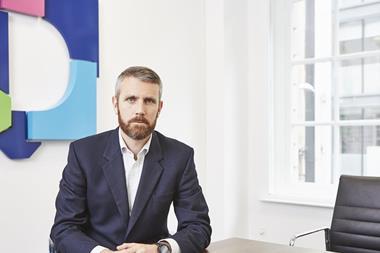Insurance Times together with our partners, SSP and IBM, held a round table discussion on the challenges facing the insurance industry on the technology front. A panel of experts gave their views
The Panel
Dave Cherry (chair), Xchanging
Lawrence Wilkes, director and principal consultantant, Everware-CBDI
David Rasche, executive chairman, SSP
Jem Eskenazi, chief information officer, Groupama
Graham Jones – senior IT manager, Allianz
Andy Jones, corporate services general manager, Guardian Holdings
Laurence Walker, managing director, SSP
Gary Parlett, joint managing director, UPCO
Hugh Pollington, IT manager, Chubb Insurance
Toby Ducker, head of strategic change, Brit Insurance
David Robson, partner, IBM Global Business Services
Dave Cherry: What are the big market changes for you guys who are specifically from the insurance community? And what are the up and coming challenges on the technology front?
Andy Jones: One for me is the change in and threat of the aggregator model, which is mentioned every time. That is changing the nature of how the customer can transact and think about their insurance going forward, providing them with real-time comparisons and choice there on screen. It is changing the face of how the insurance market operates.
Toby Ducker: The challenge there is that the aggregator model largely focuses on price. For me, the insurance industry is moving from a product-led world – even more so in the wholesale market – to a proposition-led world. The fact is that it is now about the proposition of service and not just the product you are buying into.
Graham Jones: From the aggregator point of view, the interesting thing as we commoditise the lower end of the commercial market is when are we going to plug, from an aggregator perspective, that end of the marketplace. No matter what we do, insurance down that end is a compulsory purchase. People are really going to go for the cheapest. Only people who work inside the industry will wonder if they are covered for something or not.
David Robson: That is already happening though. The Imarkets and software houses in the marketplace are enabling SME quotations across multiple insurers.
Ducker: You are starting to see those people appear. MCE has started with its quote and buy. Xbridge has also started with mini-aggregation for small commercial.
“There are eight million 18-24 year olds in the UK and about 25% of those are students. They will be the next mass affluent generation. What brands do they trust and what other things do they want to do when they are on a website or with their trusted provider?
Laurence Walker, managing director, SSP
David Rasche: We have been doing it for 10 years. We have been on the web with small commercial for four years. Going back to the aggregator issue and branding, there are two points. The thing about the aggregator is most people think, if you are in IT, the aggregator question is: how does it affect us? We reckon we had 20 million hits on the websites we support – Kwik-Fit, Swinton and a lot of small people. Work out the different level of computing power you need to host something having 20 million hits in an aggregator environment. The simple impact for an insurer or broker may well be to push down price. The other is the performance power needed to support your systems to allow the aggregator to get in. Picking up on the brands issue, a lot of people are saying that going forward people will trust different brands. Where people will buy their insurance from may well be different. If they have a trusted brand, the proposition stopping it from becoming pure price could still be realised, because there will be other parts to that proposition.
Hugh Pollington: It is very much pure price on the personal lines, home and motor sides. Aggregators all display by price.
Laurence Walker: Toby’s point about the proposition is important. It is the combination of those services. There are eight million 18-24 year olds in the UK and about 25% of those are students. They will be the next mass affluent generation. What brands do they trust and what other things do they want to do when they are on a website or with their trusted provider? Do they want to buy insurance or other financial services products? Making insurance and financial services sexier is going to be extremely important. The way we are going to do that, unfortunately, is not by doing anything with insurance; it will be from the services that exist outside of that.
Lawrence Wilkes: That same generation will also be the generation that has grown up knowing that, before they buy anything, they go to the aggregator and search the price.
Ducker: What the aggregators have done is remove the different levels of information within society that had knowledge about price. Now it is a much more level playing field. The same thing happened to travel agencies in the late 1990s when they went through a similar experience. Most of the things we have talked about have been about moving premium around – more accurate pricing and better segmentation too, but all it is doing is moving premium around. Things like the visibility of the cost of the premium and how that breaks down are definitely important. Some of the work going on in commercial and personal lines at the moment is going to be important as well. It is important not to lose sight of the fact that we are trying to manage risk here – not just shift the premium around a little bit.
Robson: Consumers want to be able to flex their behaviour in order to get the types of premiums they want. Pay-as-you-drive is going to be one of those. I could drive round the M25 or go through the middle of London. It is going to cost me less to go round the M25 than it is through the middle of London, from an insurance perspective. That ripples through to everything we see in the marketplace. The more information we give to consumers, the more of those sorts of choices they can make.
Rasche: We still come back to the point of today: how many insurance company systems can support all those types of things we need to do? It is important that the industry understands what its limitations are in what it can do today.
Cherry: One of the things Hugh was saying is that, at the moment, it is difficult from the provider’s side to see what is not about price.
Pollington: Particularly in how your system was process-driven not transaction-driven. We sell our personal lines product, which is a high net worth product, through three channels – through a broker, a call centre, the internet or electronic data interchange (EDI). We basically have the same system at the back of them but, in many cases, that is not the case. You need significant investment to move from an old transactions-based system to be able to use that functionality, which you do not want to throw away, through different channels.
Cherry: That leads to one of the other questions: is there a fundamental change that insurance organisations need to make in terms of how they embrace IT?
Pollington The difficulty is in doing it. One option is to throw out all your existing systems and replace them. Another is to do it gradually. For me, from an IT perspective, this is the biggest challenge. It is not just doing it; it is getting business focus on it. In my case, with high net worth personal lines, we are probably one of the market leaders but are still niche within the business. They budget according to the size of the niche. There are many other pressures on the business; this is a soft market at the moment.
Ducker: If we are in the middle of a soft market, now is the time to change.
Andy Jones: What is needed is a change of thinking and culture in the boardroom. Over the last 10-15 years, IT has been seen as a way of helping to reduce costs. We are in a commodities market. It has usually been relatively easy to put costs benefits business cases together for such investment. Now we are talking about investment in IT that will spawn a different proposition, and it is a little trickier to put the investment business cases together for that, which is why the boardrooms have to change to be braver in embracing new ways, potentially, to transact insurance in the future.
Walker: Is that fundamentally because the decisions that have to be made are not about streamlining or reducing costs but about people using IT for competitive advantage? I do not think this has happened before.
Robson: The business case model is a good example because, to date, most IT business cases are about cost reduction.
Cherry: Once upon a time, they were not necessarily just about that. For the IT industry, in early 2000, organisations’ focus was on reducing costs. Is there something that organisations like SSP and IBM need to do? ‘
Rasche: There are some things we can definitely do. Some of it is about the pricing model and being able to put it more towards the value enhancement of the business you are helping. Traditionally, if you look at IT systems, there is a big licence spend and a lot of hardware. More and more in our business today, we are spreading our charges either over a longer lifetime in the system, a transaction-based system, a number of hits based system or the value enhancement we are providing for the customer. Those kinds of things can help. We, as a supplier, and like IBM, would always be very keen to help people understand their business case and support it.
Gary Parlett: Cutting across all sectors, not just the insurance sector, we found that the approach to proving that business case is all important. What has typically happened in the past is that the proof point has not come early enough. There is always doubt in the boardroom about whether spend, budgets and timelines are going to be hit. Agile approaches are now beginning to address that but, again, agile approaches are needed to re-educate the boardroom.
“If you go back 20 years, IT was still something of a black art
Hugh Pollington, IT manager, Chubb Insurance
Ducker: You have seen project management skill set changes as a result because, moving from a much more traditional analysis of development and design, it is much more modular.
Robson: One of the things we can do as an industry is help you break up the difficult, complex IT environment that most insurers have into something that can be fixed in bite-sized chunks. Most insurers I talk to have 30 or 40 systems cobbled together to support their businesses. If we could do something to decouple those so they could be replaced on service-by-service models and break up that monolithic collection of applications.
Ducker: Without wanting to bring the whole party down, 10 years ago we were all talking about enterprise application integration. I am sure 10 years before that we were talking about something similar. While I fully believe that some of the principles of service-oriented architecture (SOA) are in the right place there is also a question mark around what is going to happen next.
Cherry: Is not SOA about incremental change? One of the things that enrols me in the whole architecture is that it is not about throwing in everything you have. You can make incremental changes to the value you deliver to the business without dismantling that thing upon which the business relies.
Jem Eskenazi: The concept of SOA existed for many years before it was called ‘SOA’. I did a project at Philips Medical Systems in 1999/2000 where we had hundreds of different systems linked together with point-to-point connections. We felt that it was too complex to replace it with anything. We put an information bus in the middle of it, disconnected everything, then reattached everything as it was to that bus. We then started a migration to more modern systems. The concept existed. The beauty of SOA today is that, finally, people are agreeing on what the standard should be and how different models could talk to each other. For the Philips’ case, we had to create our own standard about communications. That is the big difference. Communicating with the board or making a change of mentality in the board is not very different in this industry than in others.
Rasche: One of the big issues the insurance industry faces that many other industries have done in a different way is the consolidation that has happened among insurance companies. There has been massive consolidation from the early part of this decade. Most of the major companies have been reducing the number of systems that they have rather than saying they want to replace. The IT director’s task was to slim down the number of historic systems. Whether that was the right thing to do, that was what happened.
Ducker: Coming back to the point that was made earlier, I am seeing, day in and day out, projects being selected for their revenue-generation potential as opposed to their cost-saving potential.
Cherry: Is that a recent transformation?
Ducker: It has increasingly become the priority in the last couple of years. Therefore it becomes even harder to justify breaking everything up, because you are living in an environment in which they are looking for the next sell, the next opportunity, in a much more focused way.
Cherry: Is it also that functioning IT systems have been an occult art for the board? It is not something that they have had any real understanding of. Is that dismantling? We are all lost if that attitude is not changing.
Rasche: One of the biggest issues is to get business and IT strategy well aligned so that people understand. In a number of organisations, there are younger, more business skilled IT professionals, but do we have more IT literate board professionals who are prepared to look at the whole piece?
Pollington: That is a continuing problem. If you go back 20 years, IT was still something of a black art. You would hope and expect your board to be more clued up as they and their families are exposed to it.
Graham Jones: I always find it shocking when there is pride among business people about not understanding IT.
Walker: The issues associated with legacy or heritage systems is, it is very difficult at board level to explain the long-term strategic benefits of replacing a core administration system when the guy sitting next to you is talking about delivering competitive advantage by adding on a particular thing that brings particular return in this fiscal period. Delivering that business case is extremely difficult.
Cherry: That raises another question. From your previous experience of SOA, does it look like a less or more risky way of modifying system change?
Eskenazi: I would definitely say less risky. It is just that the first step is difficult, if what you have is monolithic.
Ducker: SOA still has a number of questions to answer as well. For example, security is a big one for me. As soon as you start breaking these up and have modular components, you need a different security model.
Walker: There are lots of companies that do not have to go through that change. They are entering our market as new players and completely changing the model, with the technology available today, able to give them a step change advantage over current players. It is case of adapt or die.
“You can get to some de facto standards without letting the industry drive them. Sometimes, if you let the industry drive them, it will take five years not to get a standard
David Rasche, executive chairman, SSP
Rasche: If you cannot change your products, what are you going to do? If you cannot have a single view of a customer, how on earth can you service competitively with someone else? You might not like the change, but you have to put yourself in that position because, if not, whether in one, two or five years’ time, you will have strategic and competitive disadvantages.
Walker: That is the problem that you have to explain to the board. You cannot put a fiscal case for a particular period on that because it is just about keeping you in business. What do you do about the big, scary competitor that does not yet exist?
Graham Jones: What we are talking about, componentisation and an SOA swap over, is something that will probably take five years to complete. We are an industry based around managing risk and are naturally risk averse people. What we are asking the board to do is risky. It is to be brave. That does not come naturally to a lot of people.
Rasche: There are some risk share things we do with people. It is less risky to change a system today than it has ever been, because the technology and the functionality of systems available are stronger.
Eskenazi: I am paying my internal people a massive amount to keep working on it and they should be doing other things.
Robson: One of the things SOA delivers is an ability to move from the old to the new world in an incremental manner.
Wilkes: The other thing around SOA and componentisation is you have to approach from a standpoint where you are not trying to turn every single thing into a service or component. You want to say this is an area where you will probably need flexibility so should componentise that, but another area might be stable.
Ducker: That is about assessing where the flexibility needs to be and where you can be more tactical in the solution.
Parlett: We have found that very often there is a real conflict between business as usual and building the future. Boards do not recognise that. Culturally they tend to be very good at doing business as usual. They keep the systems going. Translating that into change, and implementing new systems and processes, is a different culture altogether.
Ducker: Sometimes you need a good blend of in-house people and also some new blood from outside to help give that impetus for change. It is about trying to find that balance.
Pollington: Having the right skills is a key point. How you staff up for any enterprise is critical to its success. You always need a blend of geeks. I cannot think of a better expression. In my own team, we have some people who love to do just that.
Rasche: Is there a balance or a decision for some organisations as to whether it is an in-house team? We have people at all sorts of different levels. The skills issue is essential to those people who want to run their own destiny and be part of that. We and IBM are always comfortable with that environment.
Andy Jones: Some companies view IT as just a commodity that you go and buy on the outside market. Others see it as core to the business performance and business success and therefore insource it. You will always have people with different views.
Rasche: There should be people with different views. What I am saying is I am not sure the business always knows why that is the case. In some cases, they are stuck with it and should do more of it. In other cases, they are stuck with it and should do less of it.
Robson: It seems to me that insurance companies largely copy on everything and share very little.
Pollington: You have the industry portal, Polaris. I do not know what other people think, but it has only been a relative success. Part of that is due to the cost of joining and the cost of their products, if you are in a niche. It has not been hugely successful. There have been other attempts by software houses and commercial organisations to introduce portals.
Rasche: I have been involved in Polaris for a long time. Part of the issue is the competitive element. You either have some IT people sharing something, which they want to do in different ways, or you have business people sharing. There are so many different pressures in that environment because they traditionally have competed. Some insurers share their supply chains and buying power experience, which is not as competitive. It is seen as a clear advantage for several of them to get together to buy their white goods cheaper or something like that.
Cherry: There is another fundamental problem in insurance, because all of these initiatives have in the past been about creating transparency for price and availability. That is not what you want as an insurer. If you are one of 200 and are the cheapest quote, you got it wrong. You have underpriced it; you have under-dealt. That is not great if you are the insurer. Actively funding those initiatives is something quite difficult for an insurer.
Ducker: For me, the core of the competition within the insurance market is the question set. We talk about Polaris being a relative success. Kinnect, which I saw happening when I was working in the Lloyd’s environment, was an unqualified disaster. It took Lloyd’s and Kinnect five years to not agree a series of questions between each other. If they cannot agree at a business level what the questions are, how can we ever put that requirement into effect operationally? Therefore, the industry itself still has some work to do to join up the various points of the shape.
Rasche: You can get to some de facto standards without letting the industry drive them. Sometimes, if you let the industry drive them, it will take five years not to get a standard. IT




































